1. Bundgaard L, Sørensen MA, Nilsson T, Salling E, Jacobsen S. 2018; Evaluation of systemic and local inflammatory parameters and manifestations of pain in an equine experimental wound model. J Equine Vet Sci. 68:81–7. DOI:
10.1016/j.jevs.2018.05.219. PMID:
31256894.

2. McCormack K. 1994; The spinal actions of nonsteroidal anti-inflammatory drugs and the dissociation between their anti-inflammatory and analgesic effects. Drugs. 47 Suppl 5:28–45. DOI:
10.2165/00003495-199400475-00006. PMID:
7525183.

4. Abramson SB. 1992; Treatment of gout and crystal arthropathies and uses and mechanisms of action of nonsteroidal anti-inflammatory drugs. Curr Opin Rheumatol. 4:295–300. DOI:
10.1097/00002281-199206000-00002. PMID:
1599806.

5. Graham DM, McPherson H, Lieberman P. 2001; Skin testing in the evaluation of hymenoptera allergy and drug allergy. Immunol Allergy Clin North Am. 21:301–20. DOI:
10.1016/S0889-8561(05)70208-3.

6. Li YJ, Zhou J, Lei M. 2018; Clinical therapeutic study on the treatment of knee osteoarthritis with Zhongyi paste. Asia-Pac Tradit Med. 8:167–9.
7. Schrier DJ, Moniot S, Gluckman MI, Gilbertsen RB. 1987; The topical anti-inflammatory effects of a topical preparation of meclofenamic acid on carrageenan-induced footpad swelling in mice. J Pharm Pharmacol. 39:57–9. DOI:
10.1111/j.2042-7158.1987.tb07165.x. PMID:
2880988.

8. Singh G, Katyal SL, Brown WE, Kennedy AL, Singh U, Wong-Chong ML. 1990; Clara cell 10 kDa protein (CC10): comparison of structure and function to uteroglobin. Biochim Biophys Acta. 1039:348–55. DOI:
10.1016/0167-4838(90)90270-P. PMID:
2378892.
9. Li YY, Huang SS, Lee MM, Deng JS, Huang GJ. 2015; Anti-inflammatory activities of cardamonin from Alpinia katsumadai through heme oxygenase-1 induction and inhibition of NF-κB and MAPK signaling pathway in the carrageenan-induced paw edema. Int Immunopharmacol. 25:332–9. DOI:
10.1016/j.intimp.2015.02.002. PMID:
25681284.

10. Minghetti L, Polazzi E, Nicolini A, Créminon C, Levi G. 1997; Up-regulation of cyclooxygenase-2 expression in cultured microglia by prostaglandin E2, cyclic AMP and non-steroidal anti-inflammatory drugs. Eur J Neurosci. 9:934–40. DOI:
10.1111/j.1460-9568.1997.tb01444.x. PMID:
9182946.

11. Martey CA, Pollock SJ, Turner CK, O'Reilly KM, Baglole CJ, Phipps RP, et al. 2004; Cigarette smoke induces cyclooxygenase-2 and microsomal prostaglandin E2 synthase in human lung fibroblasts: implications for lung inflammation and cancer. Am J Physiol Lung Cell Mol Physiol. 287:L981–91. DOI:
10.1152/ajplung.00239.2003. PMID:
15234907.

12. Li W, Wu J, Yang Y, Pan L. 2017; Oxysophocarpine ameliorates carrageenan-induced inflammatory pain via adjusting ERK1/2-COX-2-PGE2 pathway in mice. Animal Hus Feed Sci. 38:15–9.
13. Wang L, Deng T, Zhang J, Chen Y. 2017; Resveratrol ameliorates inflammatory pain via inhibiting the COX-2/PGE2 signaling pathway in mice. Pharm Clin Chinese Mater Med. 33:35–8.
14. Liu Y, Zhang YJ, Yu Y, Li H, Liu L. 2019; Study on antipyretic, analgesic and anti-inflammatory effects of Fangfeng Jiere mixture. J Emerg Tradit Chinese Med. 28:1576–9.
15. Yang H, Cheng X, Wang YH, Du GH. 2016; Effects of esculin on the swelling of toes and inflammation induced by carrageenan in mice. Chinese J New Drugs. 25:2319–22.
16. Said R, Abdel-Rehim M, Sadeghi B, Al-Hashemi S, Hassan Z, Hassan M. 2007; Cyclophosphamide pharmacokinetics in mice: a comparison between retro orbital sampling versus serial tail vein bleeding. Open Pharmacol J. 1:30–35. DOI:
10.2174/1874143600701010030.

17. Liu B, Ma R, Zhang J, Sun P, Yi R, Zhao X. 2019; Preventive effect of small-leaved Kuding tea (Ligustrum robustum (Roxb.) Bl.) polyphenols on D-galactose-induced oxidative stress and aging in mice. Evid Based Complement Alternat Med. 2019:3152324. DOI:
10.1155/2019/3152324. PMID:
31239856. PMCID:
PMC6556317.

18. Wang M, Wang J, Tan R, Wu Q, Qiu H, Yang J, et al. 2013; Effect of berberine on PPAR α /NO activation in high glucose- and insulin-induced cardiomyocyte hypertrophy. Evid Based Complement Alternat Med. 2013:285489. DOI:
10.1155/2013/285489. PMID:
23573121. PMCID:
PMC3616349.
19. Chou TC, Chang LP, Li CY, Wong CS, Yang SP. 2003; The antiinflammatory and analgesic effects of baicalin in carrageenan-evoked thermal hyperalgesia. Anesth Analg. 97:1724–9. DOI:
10.1213/01.ANE.0000087066.71572.3F. PMID:
14633550.

20. Zhao Y, Yao Y, Zhang H, Wu C, Deng Z, Wang S. 2019; Pharmacokinetics and correlation between in vivo and in vitro transdermal penetration of indomethacin submicron emulsion gel. Chin J Mod Appl Pharm. 36:31–5.
21. Hu G, Zhang L, Xu B, Ma F, Wang K, Lu Y, et al. 2020; Clinical study on diclofenac diethylamine emulsion delivery via nano plum-blossom needle for treatment of acute gouty arthritis. Chinese J Inform Tradit Chinese Med. 27:8–11.
22. Castro-Lopes JM, Tavares I, Tölle TR, Coimbra A. 1994; Carrageenan-induced inflammation of the hind foot provokes a rise of GABA-immunoreactive cells in the rat spinal cord that is prevented by peripheral neurectomy or neonatal capsaicin treatment. Pain. 56:193–201. DOI:
10.1016/0304-3959(94)90094-9.

23. Kalyan Kumar G, Dhamotharan R, Kulkarni NM, Mahat MY, Gunasekaran J, Ashfaque M. 2011; Embelin reduces cutaneous TNF-α level and ameliorates skin edema in acute and chronic model of skin inflammation in mice. Eur J Pharmacol. 662:63–9. DOI:
10.1016/j.ejphar.2011.04.037. PMID:
21549694.

24. Holmin S, Mathiesen T. 2000; Intracerebral administration of interleukin-1beta and induction of inflammation, apoptosis, and vasogenic edema. J Neurosurg. 92:108–20. DOI:
10.3171/jns.2000.92.1.0108. PMID:
10616089.
25. Fang JQ, Liu F, Shao XM, Wu YY. 2007; [Effect of electroacupuncture on carrageenan-induced inflammation, IL-1beta and TNF-alpha concentrations and their mRNA expressions in toe tissue in rats]. Zhen Ci Yan Jiu. 32:224–8. Chinese. PMID:
17907382.
26. Zhang M, Zhou J, Wang L, Li B, Guo J, Guan X, et al. 2014; Caffeic acid reduces cutaneous tumor necrosis factor alpha (TNF-α), IL-6 and IL-1β levels and ameliorates skin edema in acute and chronic model of cutaneous inflammation in mice. Biol Pharm Bull. 37:347–54. DOI:
10.1248/bpb.b13-00459. PMID:
24583856.

27. Zambelli VO, Picolo G, Fernandes CAH, Fontes MRM, Cury Y. 2017; Secreted phospholipases A₂ from animal venoms in pain and analgesia. Toxins (Basel). 9:406. DOI:
10.3390/toxins9120406. PMID:
29311537. PMCID:
PMC5744126.
28. Stachowska E, Dolegowska B, Dziedziejko V, Rybicka M, Kaczmarczyk M, Bober J, et al. 2009; Prostaglandin E2 (PGE2) and thromboxane A2 (TXA2) synthesis is regulated by conjugated linoleic acids (CLA) in human macrophages. J Physiol Pharmacol. 60:77–85. PMID:
19439810.
29. Lavigne P, Shi Q, Jolicoeur FC, Pelletier JP, Martel-Pelletier J, Fernandes JC. 2002; Modulation of IL-1beta, IL-6, TNF-alpha and PGE(2) by pharmacological agents in explants of membranes from failed total hip replacement. Osteoarthritis Cartilage. 10:898–904. DOI:
10.1053/joca.2002.0846. PMID:
12435335.

30. Damlar I, Esen E, Tatli U. 2015; Effects of glucosamine-chondroitin combination on synovial fluid IL-1β, IL-6, TNF-α and PGE2 levels in internal derangements of temporomandibular joint. Med Oral Patol Oral Cir Bucal. 20:e278–83. DOI:
10.4317/medoral.20242. PMID:
25662545. PMCID:
PMC4464914.

31. Tipton DA, Flynn JC, Stein SH, Dabbous MKh. 2003; Cyclooxygenase-2 inhibitors decrease interleukin-1beta-stimulated prostaglandin E2 and IL-6 production by human gingival fibroblasts. J Periodontol. 74:1754–63. DOI:
10.1902/jop.2003.74.12.1754. PMID:
14974816.
32. Ciruela A, Dixon AK, Bramwell S, Gonzalez MI, Pinnock RD, Lee K. 2003; Identification of MEK1 as a novel target for the treatment of neuropathic pain. Br J Pharmacol. 138:751–6. DOI:
10.1038/sj.bjp.0705103. PMID:
12642375. PMCID:
PMC1573714.

33. Li T, Hu J, Du S, Chen Y, Wang S, Wu Q. 2014; ERK1/2/COX-2/PGE2 signaling pathway mediates GPR91-dependent VEGF release in streptozotocin-induced diabetes. Mol Vis. 20:1109–21. PMID:
25324681. PMCID:
PMC4119234.
34. Lo HM, Chen CL, Tsai YJ, Wu PH, Wu WB. 2009; Thrombin induces cyclooxygenase-2 expression and prostaglandin E2 release via PAR1 activation and ERK1/2- and p38 MAPK-dependent pathway in murine macrophages. J Cell Biochem. 108:1143–52. DOI:
10.1002/jcb.22341. PMID:
19739103.
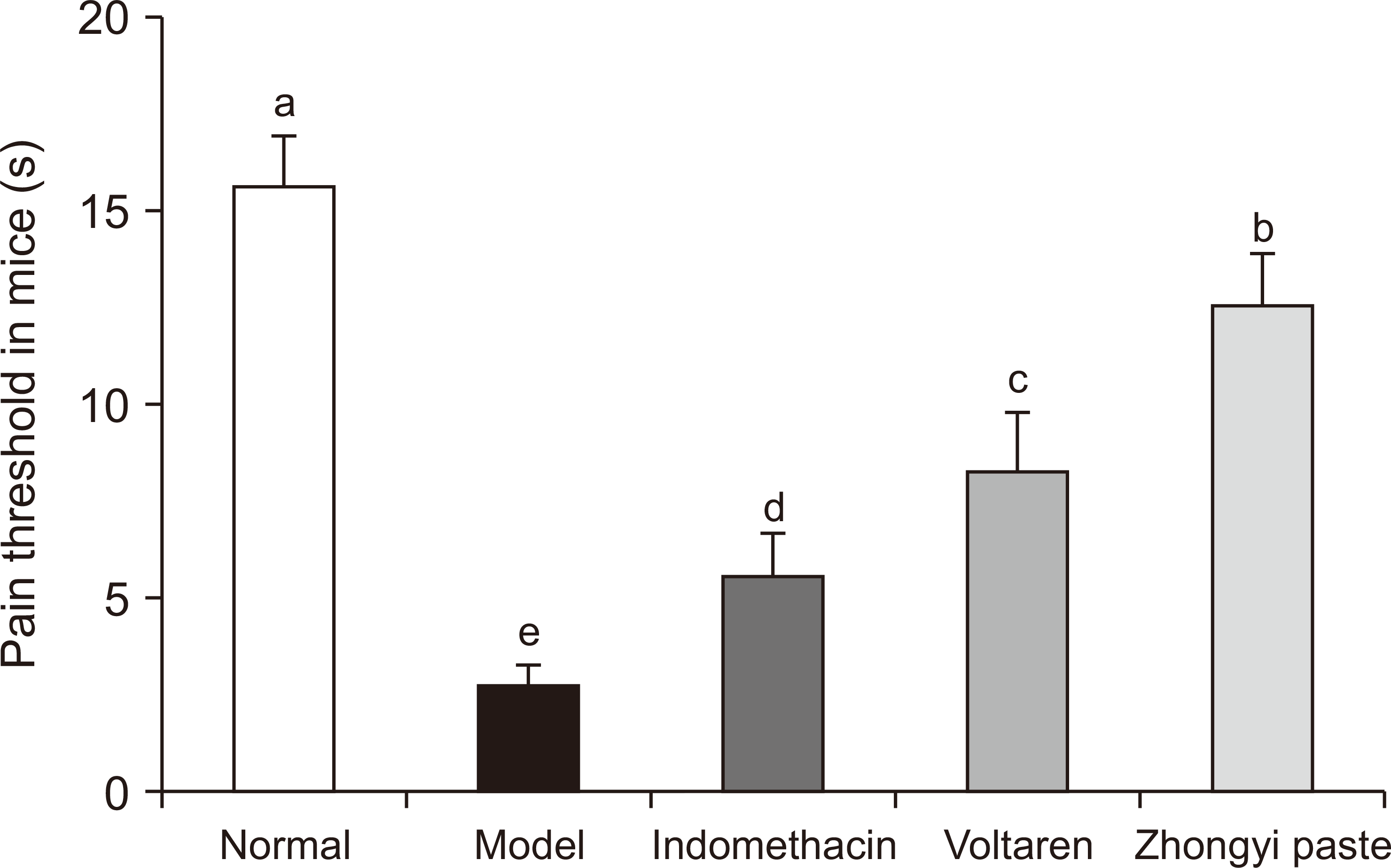
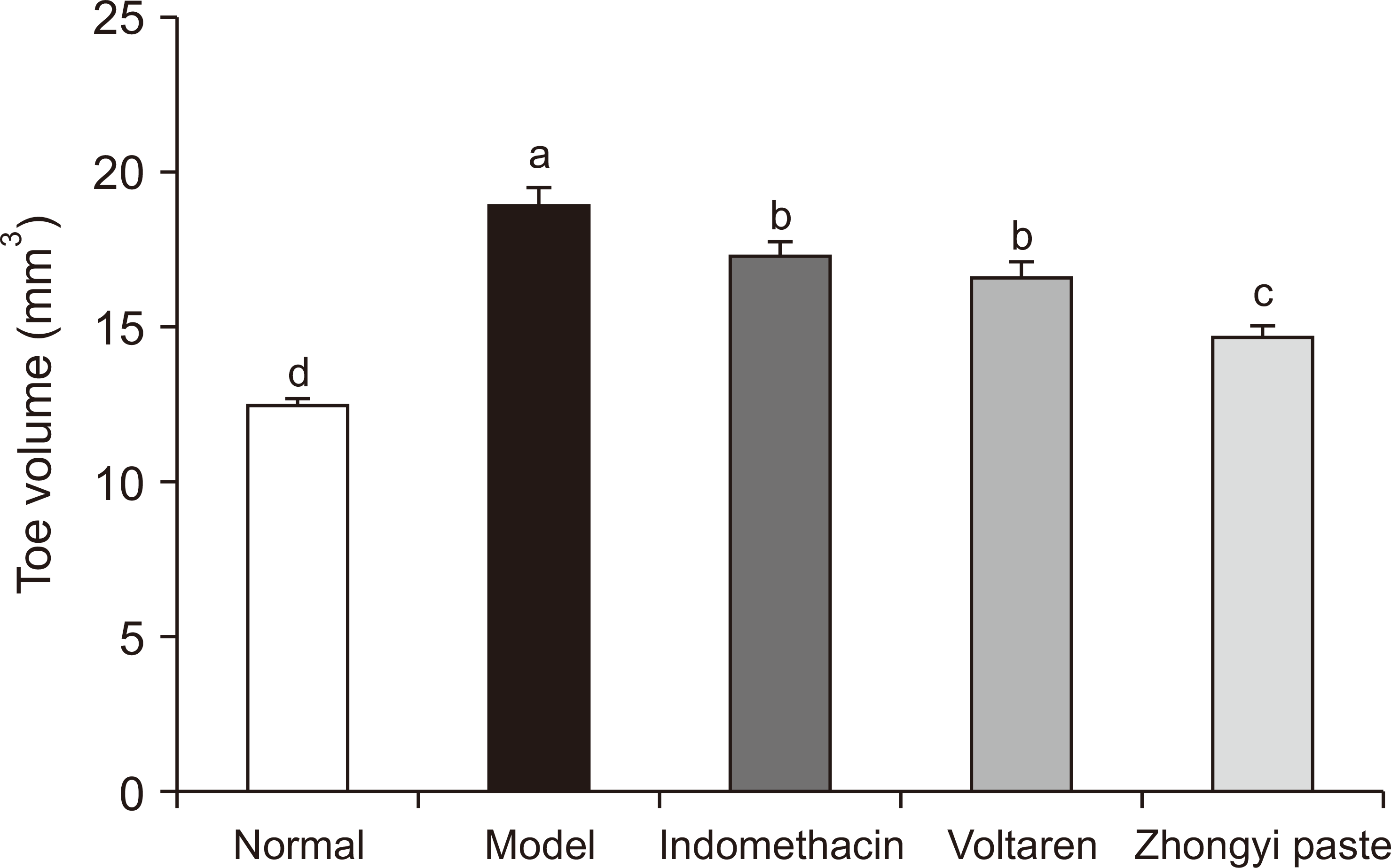
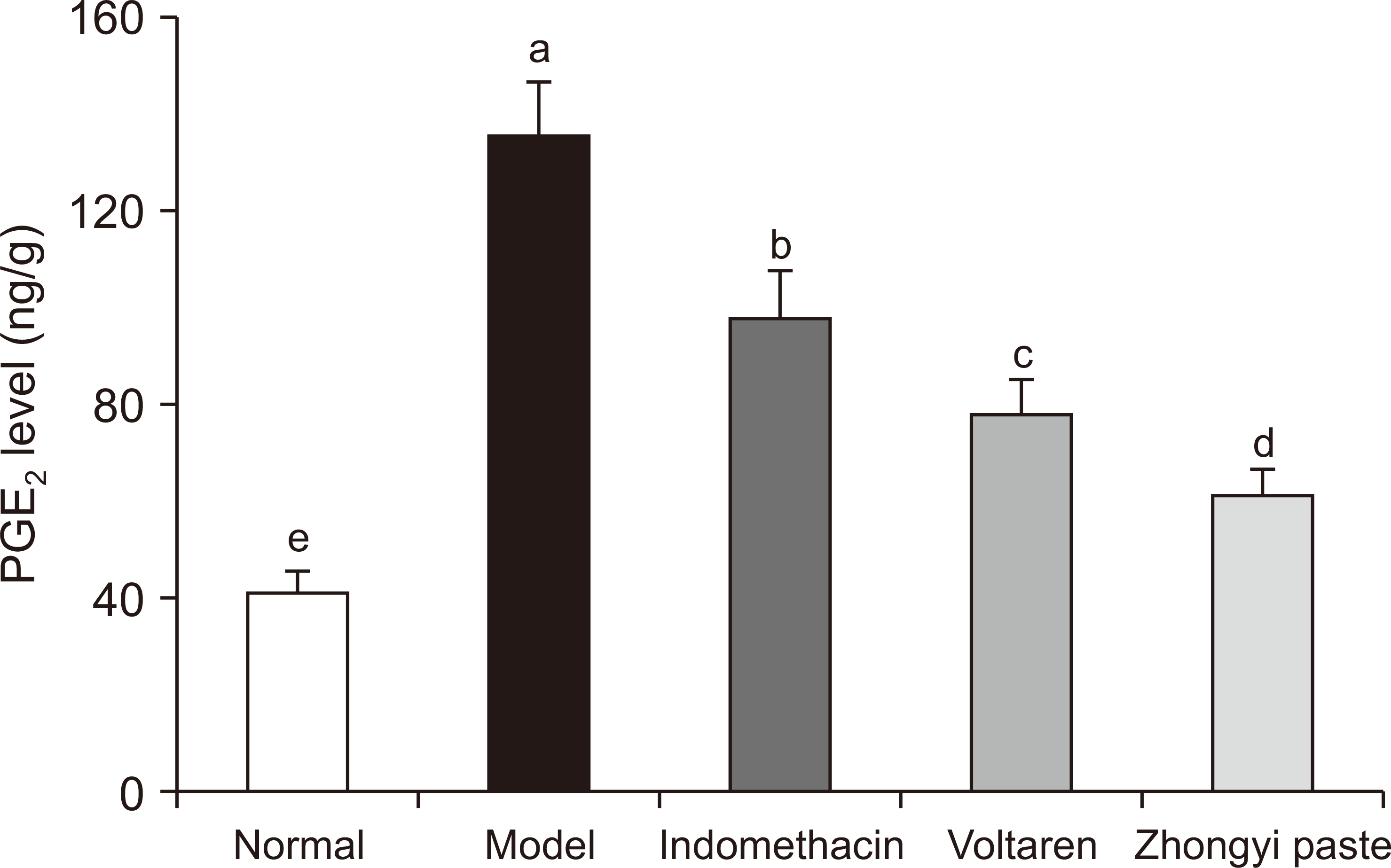
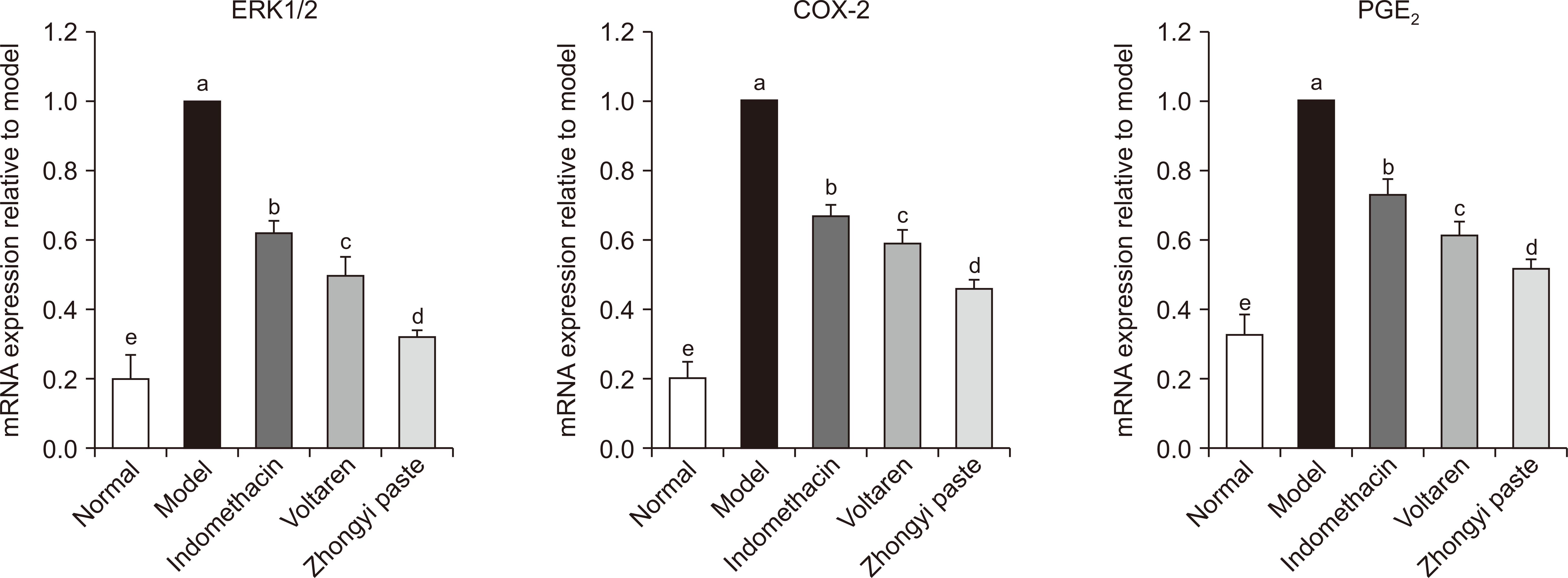
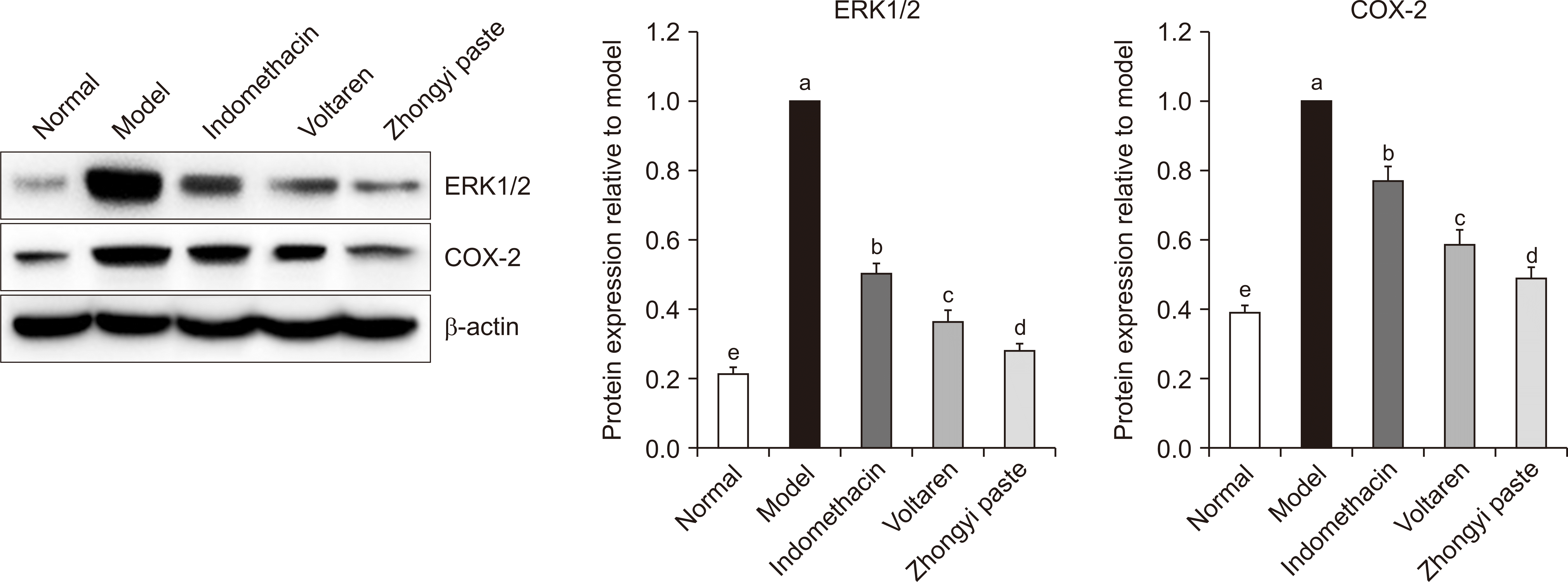




 PDF
PDF Citation
Citation Print
Print



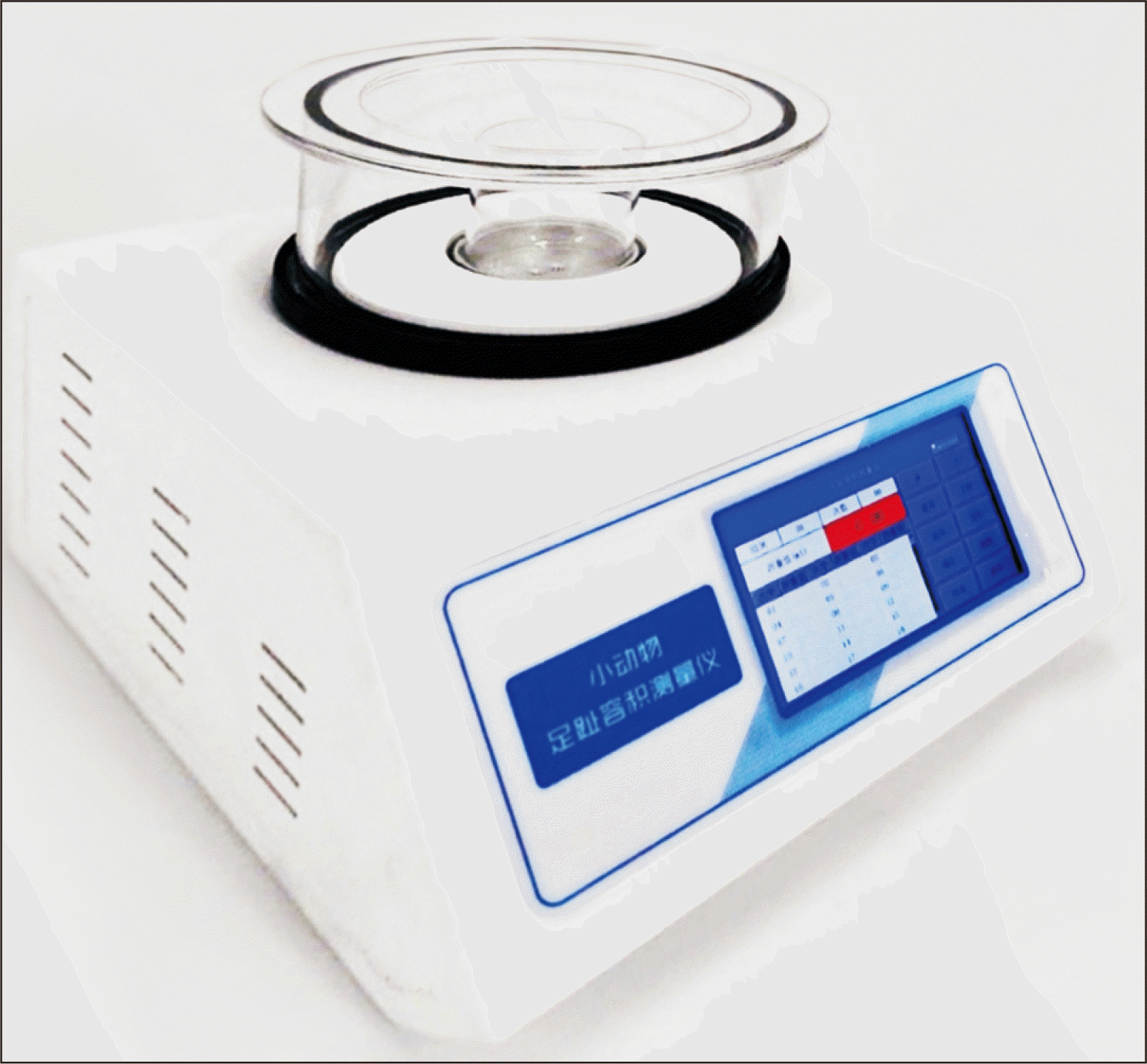
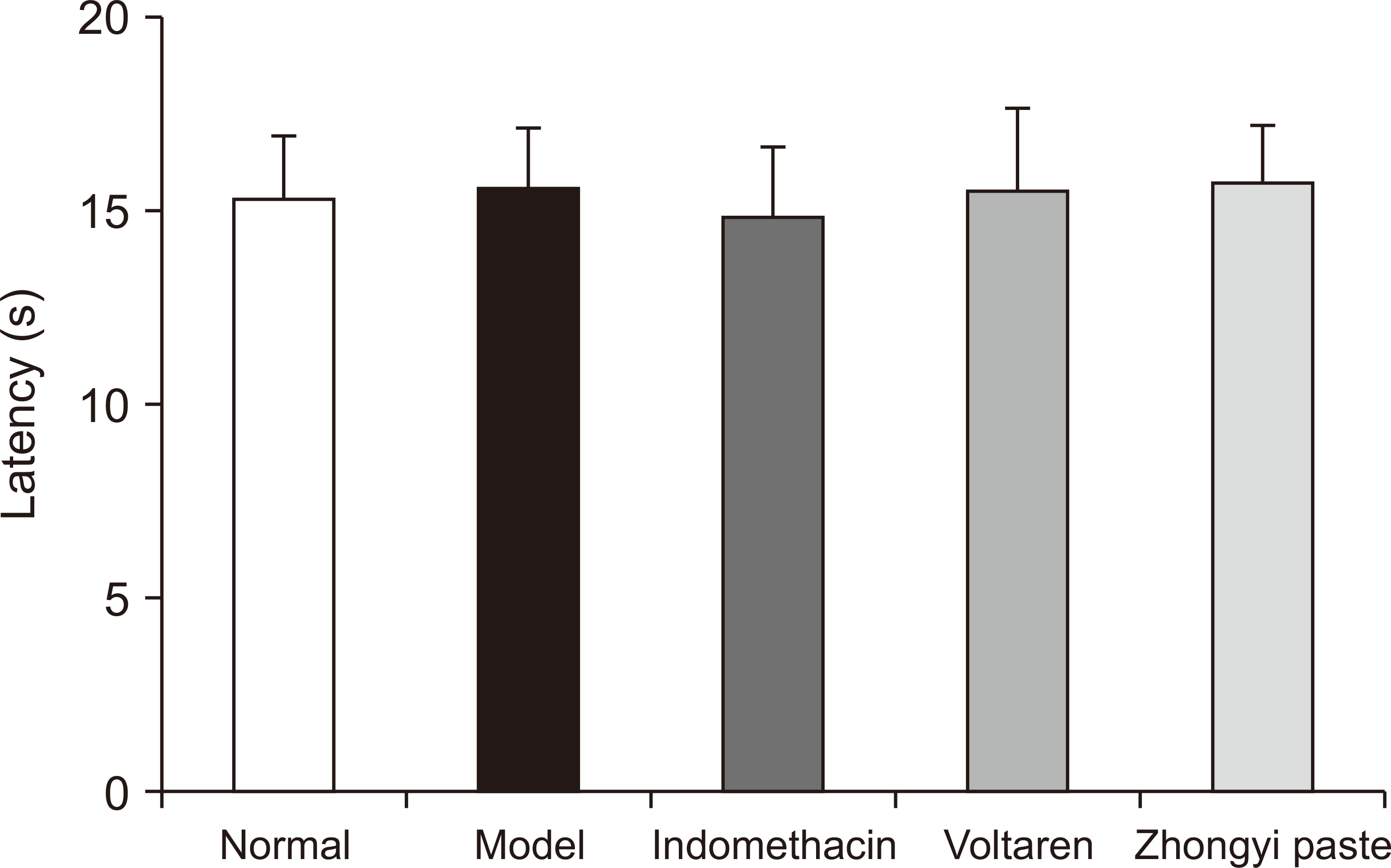
 XML Download
XML Download